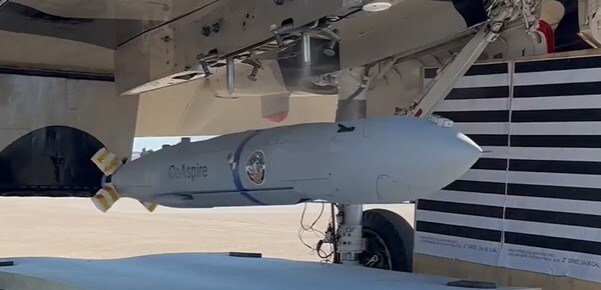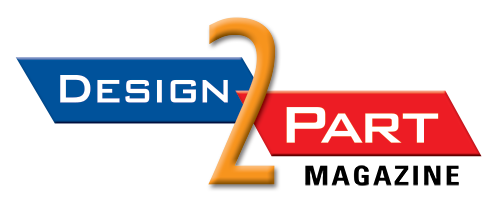
CoAspire’s Rapidly Adaptable Affordable Cruise Missile (RAACM). (Photo: CoAspire/PRNewswire)
Divergent Technologies’ software-hardware production system for industrial digital manufacturing enables customers to rapidly design, additively manufacture, and automatically assemble complex structures.
LOS ANGELES—Divergent Technologies, Inc., and prime contractor CoAspire, LLC recently announced the successful design, development, manufacture, and flight testing of CoAspire’s Rapidly Adaptable, Affordable Cruise Missile (RAACM).
The partnership between CoAspire and Divergent reportedly enabled RAACM to progress from concept to flight in record time, proving the capability of building and scaling weapons systems for changing operational needs.
CoAspire developed, in close coordination with Divergent, an ambitious program roadmap requiring delivery of first fuselages, wings, and fins from Divergent within 10 weeks. Fully integrated test rounds were required to enter ground testing within 14 weeks, culminating in a successful flight test that met customer and programmatic requirements, according to a release from Divergent Technologies.
To deliver fuselages at speed, Divergent leveraged a wealth of in-house digital tools. This reportedly allowed the team to take CoAspire’s unique cruise missile design and rapidly converge together on a cost-effective and manufacturable design that optimized for fuel tank capacity while meeting all structural performance requirements.
“The Divergent team seamlessly transitioned from digital design to additive manufacturing and automated assembly, with manufacturing instructions generated from the designs dynamically assigned to the company’s software-defined manufacturing assets,” the release stated. “Following first hardware deliveries at week 10, Divergent continued to support the CoAspire team by delivering digital design, analysis, and manufacturing artifacts required for the air worthiness approval process.”
How were these accelerated results possible? The Divergent Adaptive Production System (DAPS™), Divergent’s end-to-end engineering design and manufacturing system, leveraged AI-driven design, industrial-rate additive manufacturing, and universal robotic assembly to enable structures development and manufacturing at higher performance, speed, and scalability than conventional manufacturing systems, according to the release.
“Our strength is this next generation capability to digitally engineer and manufacture to deliver first-time-right, production ready hardware within 10 weeks,” said Divergent Technologies President and Chief Executive Officer Lukas Czinger, in a statement. “RAACM is a case study in what’s possible when adaptability is built into every phase of development.”
Doug Denneny, founder and CEO of CoAspire, said that Divergent “has rewritten the rules of development speed for complex flight vehicles.”
“The flexibility that Divergent has provided on such a tight schedule was key to enabling our flight-test and program success,” Denneny said in the release.
Under contract with the Air Force, RAACM is designed to be modular, scalable, adaptable, and rapidly deployable across air, land, and sea platforms. The Rapidly Affordable, Adaptable Cruise Missile is reported to be roughly the size of a 500-lb class MK-82 or GBU-38. It features a deployable wing, turbojet engine, guidance system, and lethal payload, and it can be launched from any aircraft compatible with the GBU-38. CoAspire is the prime contractor on RAACM and has built a supply chain spanning 26 U.S. states and two European countries, the release stated.
According to Divergent, it has created “the world’s first end-to-end software-hardware production system for industrial digital manufacturing—the Divergent Adaptive Production System (DAPS™).” The system allows customers to design, additively manufacture, and automatically assemble complex structures for automotive, aerospace, and defense applications. It is said to transform the economics, speed, and scalability of defense vehicle manufacturing by optimizing designs, dematerializing structures, and eliminating upfront capital expenditures.
